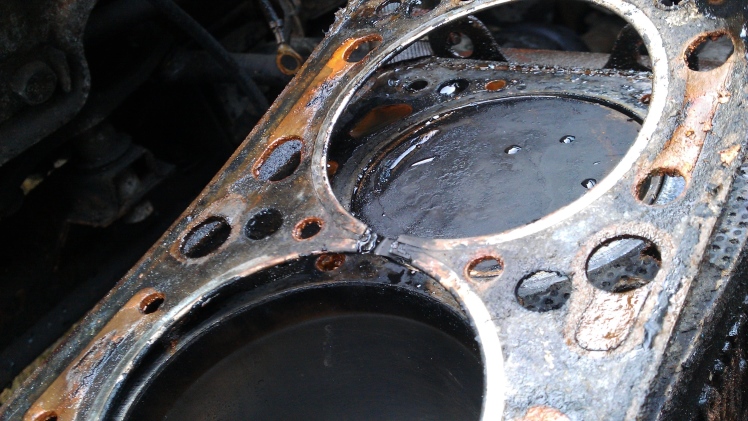In case the engine loses a lot of oil through the cylinder head gasket, oil emulsion can be found on the oil dipstick or cooling water reservoir, as well as it spouts in the reservoir when the engine is running. This means the cylinder head gasket is likely flawed. Moreover, the engine square and everything underneath is typically messy with oil leaking outwards.
In that case, it can be severe damage to be dreaded if cooling water gets into the ignition chamber; that’s why required to changes the ford 6.0 head gasket that ensure optimum compression. Water can’t be packed – the pressure increments to extraordinary qualities. A white fumes banner demonstrates that the driving rod and associating bar orientation will surrender their apparition inside a couple of kilometers.
Whatever; if you have a symptom of engine oil leakage or the oil consumption of the truck increases to disproportionate values, then you have to take on several tasks in the reciprocating of your track engine. The issue might be as minor as just replacing the head gasket sealer, in which case not so bad. To be sure, we have to rule out any other problems and some may even require a full engine overhaul. That’s why the article will be introducing the causes and symptoms of engine oil leaks or head gasket leaking and repair methods.
Chapter-1: A look at the Cylinder Head Gasket Leaking Symptoms
In most cases, the mechanical, thermal, and compound burdens can make the seal endure. Hence this component has a restricted timeframe of realistic usability. In case of an imperfection, oil or coolant may spill out. Hindered cooling or oil is damaging to the engine, so you should rapidly show your vehicle in a carport. The cylinder head gasket is generally costly to supplant, yet on the off chance that you overlook the usual signs, you hazard genuine engine harm.
Essentially, there are various symptoms that indicate a defective head gasket such as no smooth engine run, moisture on the engine block, temperature display for coolant in the red area, discolored exhaust gases (white or bluish), cooling water in the tank for oil, oil residues in the cooling water, and recognizable by the foam.
Therefore, you should rapidly decide if there is oil in the cooling framework or cooling water in the oil circuit. To do this, basically, open the hood and eliminate the cover from the extension tank. Light froth within the oil cap demonstrates cooling water in the oil. You may see water beads on the dipstick. If foam or earthy colored streaks structure in the cooling water tank, this indicates oil in the cooling framework.
Chapter-2: What can you do on the spot if a truck oil leaks or a head gasket defective?
Change engine oil to one with higher viscosity:
Overtime, the seal packing loses its flexibility, and gaps are created at the seams between the parts, which causes engine oil leakage. There are also cases where blow-by gas that vaporizes at high temperatures cools and liquefies, causing engine oil leakage.
Therefore, there is a way to replace the engine oil you are currently using with more viscous engine oil. This may stop the engine oil leak, but it is just an emergency first aid measure.
Head gasket be repaired as soon as possible:
Again says the main reason for the engine oil leak is that seal defective. Even if a rigid material is used to seal the explosion pressure, the strain will not be filled, and oil and cooling water will leak out. So when the seal is defective, the cooling and lubrication of the motor will no longer function properly.
Therefore, if you suspect this, you should make an appointment in the garage of the vehicles immediately. The prices are relatively expensive, but severe engine damage can result if you do not act quickly. This drives up the follow-up costs even more.













